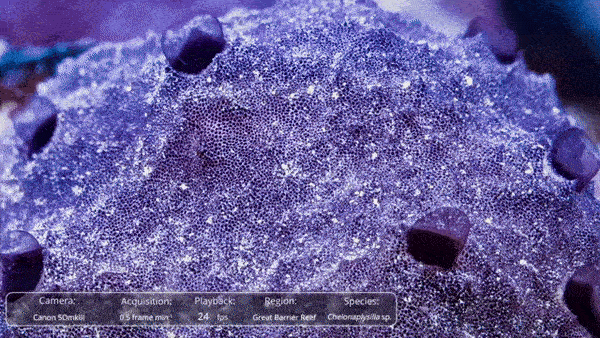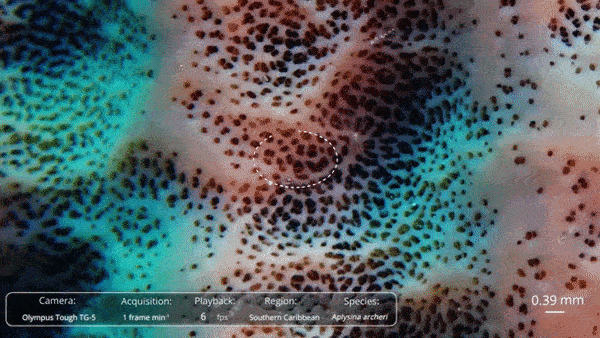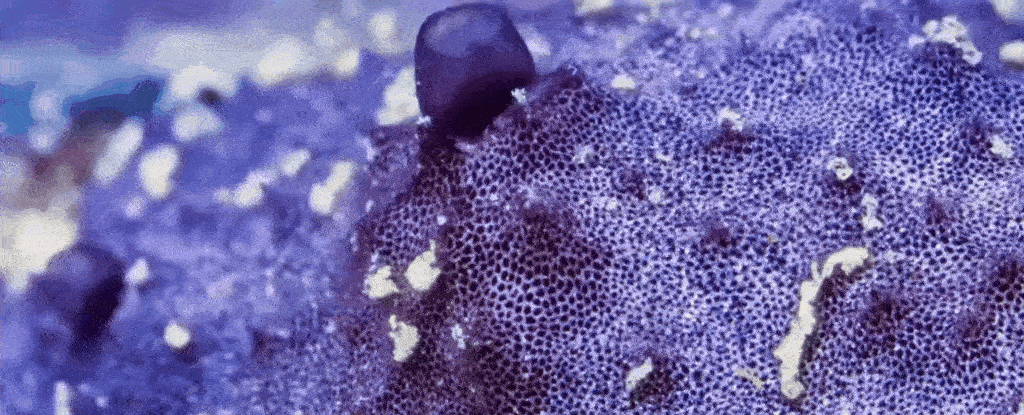Products You May Like
Sea sponges, among the oldest creatures in existence, let out what looks like a deep sea “sneeze” to filter out waste, researchers found in a new study.
Using time-lapse video, researchers captured the behavior, which could help them better understand how sponges evolved.
“Our data suggest that sneezing is an adaptation that sponges evolved to keep themselves clean,” Jasper de Goeij, a marine biologist at the University of Amsterdam and author of the new paper, said in a press release.
Sea sponges are simple multicellular creatures without brains, which date back roughly half a billion years.
The videos below, taken by the research group and credited to Current Biology/Kornder et al., depict the sponge’s sneeze.
 (Kornder et al., Current Biology, 2022)
(Kornder et al., Current Biology, 2022)
In a study published in the journal Current Biology on Wednesday, researchers recorded two species of sponges – the Caribbean Aplysina archeri, also known as a stove-pipe sponge, and a species of the genus Chelonaplysilla, found in the Indo-Pacific – letting out mighty sneezes by contracting their entire bodies.
“Let’s be clear: Sponges don’t sneeze like humans do,” de Goeij said in the press release, adding that a sponge sneeze takes roughly half an hour to complete. “But both sponge and human sneezes exist as a waste disposal mechanism,” he said.
Sea sponges are filter feeders, meaning they snag particles like plankton and bacteria from the water for nourishment.
However, a sponge’s pores can get clogged with the muck they don’t eat. Researchers found that sponges use a sneezing mechanism, which has been known to the field for years, to get rid of material they cannot digest.
A sponge is covered with tiny, chimney-like spores called ostium, which water can pass through.
In the videos shared by researchers, these inlets of water slowly let out waste-containing mucus, which then accumulates on the sponge’s surface.
Sponges occasionally contract their bodies in a slow sneeze to get rid of the unwanted material.
 (Kornder et al., Current Biology, 2022)
(Kornder et al., Current Biology, 2022)
A sponge’s trash might be a fish’s treasure. In the study, researchers observed fish and other animals feeding off of the sponge’s recently sneezed-out mucus.
“Some organic matter exists in the water surrounding the coral reef, but most of it is not concentrated enough for other animals to eat. Sponges transform this material into eatable mucus,” Kornder, a study co-author, said in a press release.
Researchers say the evidence from their study and other scientists’ deep sea dives suggest most, if not all, sponges sneeze. Still, many things are uncertain regarding the behavior.
“In the videos, you can see that the mucus moves along defined paths on the surface of the sponge before accumulating,” Kornder, said, adding, ”I have some hypotheses, but more analysis is needed to find out what is happening.”
This article was originally published by Business Insider.
More from Business Insider:
